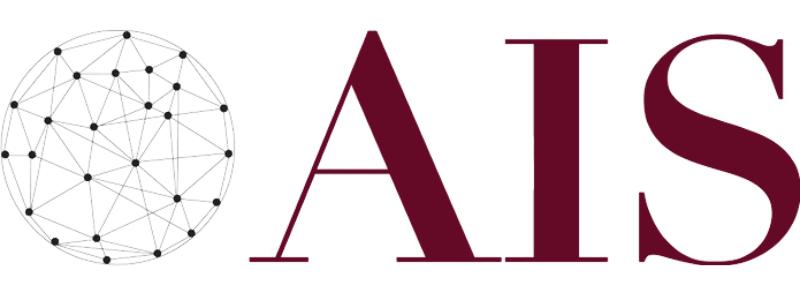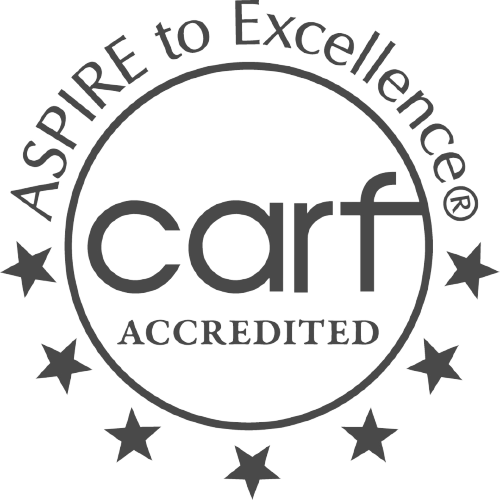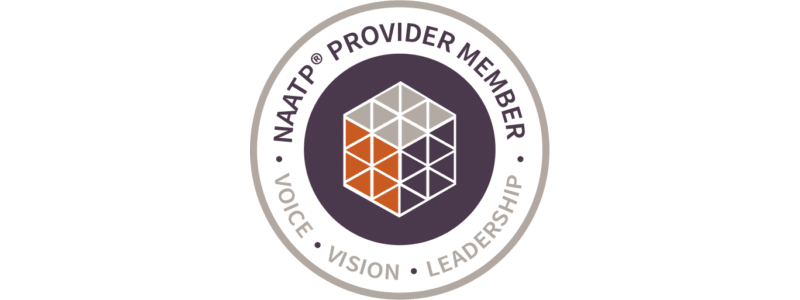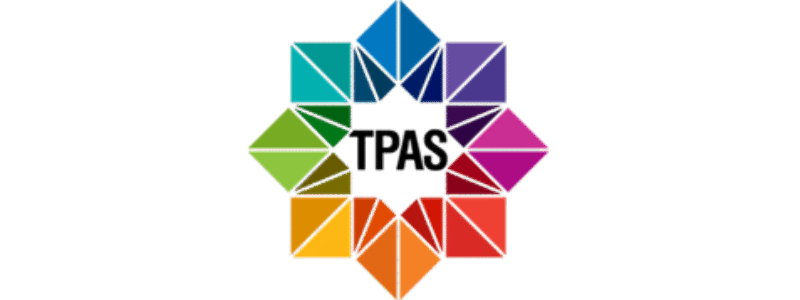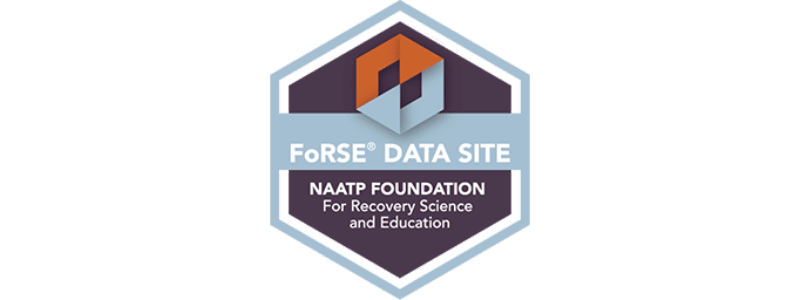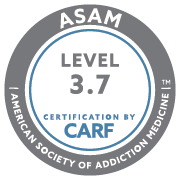Drug or alcohol addiction usually starts as experimental use in social environments. While practically any drug can become abused, some have a higher risk of addiction than others. It’s crucial to recognize drug abuse instances early on so help can be implemented before addiction kicks in.
There are common signs and symptoms of drug abuse, and knowing them can help distinguish if a loved one is dealing with substance use disorders.
General Signs of Drug Addiction in Women Include:
- Altered or secretive behavior
- Appetite changes
- Bloodshot eyes
- Changes in physical appearance
- Defensiveness about substance use
- Financial issues
- Lack of energy
- Poor work performance
- Problems at school
- Spending more money than usual
- Sudden weight loss or weight gain
- Slurred speech
Sometimes, drug use can be co-occurring with mental disorders. This requires a unique and simultaneous treatment approach known as dual diagnosis treatment. Here at New Directions For Women, we specialize in dual diagnosis treatment and other therapy methods. Read on to better understand the signs and symptoms of drug addiction and substance abuse treatment options.
Behavioral Signs of Drug Use
There are numerous behavioral signs of drug abuse. These include:
Obsessive Feelings and Actions: Obtaining and using drugs becomes the central priority of one’s life, thus causing a person to leave other obligations like work, family, and school sidelined.
Disregarding the Risks and Warning Signs: Although drug abuse causes mental and physical distress, people that struggle with addiction continue to use drugs. This is because once someone is dealing with alcoholism and drug dependence the intense cravings make it too difficult to quit alone.
Loss of Power: Even when wanting to stop drug use, addicts don’t have the willpower to do so. This is because they’ve lost complete control of their drug use habits.
Denying or Hiding Drug Use: When confronted, people that are battling addiction will likely deny their drug use. Thus, to avoid getting caught in a lie and having to explain themselves to others, many addicts will use drugs in private.
Physical Signs of Drug Use
Physical signs of addiction include withdrawal symptoms and overdose side effects. It can be difficult to pinpoint the physical signs of addiction. Still, the physical effects of drug abuse require immediate treatment.
Physical signs of a woman overdosing include:
- Aggression
- Agitation
- Delusions
- Difficulty breathing
- Drowsiness
- Hallucinations
- Loss of consciousness
- Nausea and vomiting
- Trouble walking
Physical withdrawal symptoms of drug abuse include:
- Confusion
- Depression
- Fatigue
- Fever
- Hallucinations
- Headaches
- Insomnia
- Loss of appetite
- Nausea
- Seizures
- Shakiness
Psychological Signs of Drug Use
Substance use can take a toll on a person’s psyche due to the changes that it causes to a person’s brain chemistry. Psychological signs of drug abuse include:
- Anxiousness
- Changes in personality
- Emotional and mental withdrawal
- Inattentiveness
- Irritability
- Lack of motivation
- Mood swings
- Paranoia
Signs and Symptoms of Different Types of Addiction
Although they are often common, the signs and symptoms that a person will experience due to drug abuse can vary depending on that person’s drug of choice. Below are the different warning signs of drug use for some of the most popular drugs that people are addicted to today.
Signs of Drug Addiction
Appetite Loss
Financial Issues
Slurred Speech
Trouble at School/Work
Weight Loss/Gain
Risk Factors of Drug Dependence
Genetics
Environment
Early Drug Abuse
Drug of Choice
Cocaine is an illicit drug that’s made from the leaves of the coca plant that’s native to South America. When used as a street drug, cocaine looks like white, crystal powder. People who abuse cocaine usually either rub cocaine against their gums or smoke, snort or inject cocaine into their body’s system. Since cocaine increases the amount of dopamine in the brain without recycling it, many people who abuse cocaine become dependent and addicted to the substance.
Signs of cocaine abuse include:
- Anxiety
- Dilated pupils
- Elevated mood
- Excited speech
- Feeling invincible
- Increased energy
- Paranoia
- Restlessness
Benzodiazepines, or benzos, are sedative prescription medications that doctors often prescribe to people with anxiety, seizures, and other medical conditions that may cause them to need to be sedated in some way. Benzodiazepines help treat anxiety and seizures by acting on the central nervous system in a way that relaxes muscles, produces sedative effects, and lowers anxiety levels. Common benzodiazepine prescription medications include Valium and Xanax.
Signs of benzodiazepine abuse include:
- Confusion
- Depression
- Dizziness
- Drowsiness
- Headache
- Poor coordination
- Trembling
- Vision problems
- Mood swings
Heroin is an opioid drug that’s made from morphine, which is a natural substance that’s taken from the seed pod of various opium poppy plants. Heroin comes in the form of a white or brown powder or black tar. People who abuse heroin inject, smoke, snort, or sniff it to get it into their body’s system. When people abuse heroin, the substance binds to the opioid receptors in the brain in a way that causes the person that’s abusing the heroin to feel a rush of euphoria. The euphoric feeling that heroin users feel when they take the substance is what makes it so addictive.
Signs of heroin abuse include:
- Blue colored lips or nails
- Constipation
- Delirium
- Extreme drowsiness
- Loss of consciousness
- Low blood pressure
- Pinpoint pupils
- Weak pulse
- Odd sleep patterns
People can abuse almost any type of prescription drug. People who abuse prescription drugs often do so by accident. In fact, most people develop addictions to prescription drugs by taking their medications for a longer period of time than originally prescribed. Many people also develop addictions to prescription drugs because they think that the medications aren’t working fast enough and thus take a higher dosage than they are supposed to.
Common signs of prescription drug abuse include:
- Agitation
- High blood pressure
- Impulsive behavior
- Insomnia
- Irregular heartbeat
- Irritability
- Restlessness
- Weight loss
Risk Factors for Drug Dependence in Women
Since the male and female bodies are different from one another, the factors that lead men and women into misusing drugs sometimes differ from one another. Some of the common factors for substance use disorder in women are described below.
Genetics
Substance use isn’t caused by weak willpower or a lack of morals. The chemical reactions that occur in the brains of people that are suffering from substance use disorders are very different from the ones that occur in the brains of people that aren’t addicted to drugs. That explains why some women may smoke cigarettes irregularly only for pleasure, while others need them daily to function.
Family history is also a major risk factor for addiction. Studies show that up to half of the risks of developing addictions to alcohol, nicotine, or other substances are based on genetics. Women with family members that misuse drugs are also more likely to develop an addiction themselves.
Environment
Environmental factors can also raise the risk factors of addiction in women. For teens and children, a lack of parental engagement can lead to a greater risk of experimenting with drugs. In fact, young women who experience neglect or abuse from their parents are more likely to use drugs to deal with their emotions.
Peer pressure is another common addiction risk factor among young women. Even when it’s not aggressive, pressure from friends can cause young women to start experimenting with drugs, which could then lead to addiction. The availability of drugs in the social circles of young women can also often affect the risks of them developing drug addictions. For instance, smoking marijuana in social settings is very popular among high school and college students.
Early Age Drug or Alcohol Abuse
Another risk factor for addiction for women is the age at which the behavior began. In fact, one survey found that young women between the ages of 18 and 24 were more likely to suffer from addiction than older women. This is because if someone misuses drugs while young it can impact their brain development. This, in turn, can make a person more inclined to develop issues as he or she ages and the addiction progresses.
Drug of Choice
While some drug addictions progress slowly over numerous months or years, others develop more quickly. A person’s drug of choice can also impact how fast addiction develops. Drugs like heroin, cocaine, and meth tend to be more physically addictive than marijuana or alcohol. Cocaine or heroin users that are experiencing withdrawals also tend to experience more physical pain than those that are experiencing withdrawals from less hard drugs.
As a result, many drug users take higher doses of illicit drugs to prevent them from feeling withdrawals. This is one of the greatest overall signs of drug addiction. Unfortunately, continuously increasing your dosage of drug use can lead to severe complications, like an overdose.
Method of Use
Just as certain drugs are more addictive than others, the method that a person chooses to use drugs can also increase the risk of addiction. Drugs that are injected or smoked have more addictive factors than drugs that are swallowed. This is because drugs that are smoked or injected go straight into the bloodstream and brain rather than passing through the liver and other organs that filter them first.
Effects of Drug Use on Pregnant Women
Research shows that pregnant women’s use of tobacco, alcohol, or illicit drugs can cause severe health consequences for their infants. This is because many drugs pass easily through the placenta and reach the fetus. As a result, smoking marijuana or tobacco, taking prescription painkillers, or using illegal drugs during pregnancy can triple the chances of having a stillbirth.
Drug withdrawals can develop in babies for up to 14 days after their birth. Symptoms of drug withdrawal in newborn babies include:
- Abnormal sucking reflex
- Blotchy skin coloring
- Diarrhea
- Excessive or high-pitched crying
- Fever
- Hyperactive reflexes
- Increased muscle tone
- Irritability
- Poor feeding
- Rapid breathing
- Seizures
- Sleep problems
- Slow weight gain
- Stuffy nose and sneezing
- Sweating
- Trembling
- Vomiting
Effects of drug use could be long-term and possibly fatal to babies. As a result, newborn babies that were exposed to drug use could develop the following problems:
- Congenital disabilities
- Low birth weight
- Premature birth
- Small head circumference
- Sudden infant death syndrome
The Link Between Addiction and Mental Health
When a person suffers from both a substance use disorder and a mental disorder at the same time, that person has a co-occurring disorder. Suffering from just substance abuse problems is hard enough. Thus, adding mental disorders to the mix makes dealing with addiction even more difficult.
Co-occurring disorders create severe symptoms that disrupt a person’s ability to function at school, at work, or at home. This ultimately leads to relationship issues and financial problems. Suffering from a co-occurring disorder makes it difficult to associate with others and deal with life.
Co-occurring disorders can even affect each other. When they do, they can worsen the conditions of both disorders. This is because not treating each disorder within co-occurring issues, will worsen the addiction within that co-occurring disorder. This will, in turn, also worsen the severity of the co-occurring disorder’s mental illness.
Dual Diagnosis Treatment
Dual diagnosis treatment occurs when a specialist simultaneously treats addiction and a mental health disorder within one person. Because the addiction and mental health disorder within a dual diagnosis is occurring at the same time, one can increase the severity of the other.
Other medical conditions can also enhance the risk of obtaining a drug addiction. For instance, women who take prescription pain pills after surgery are at risk for long-term abuse. An illness or injury can also encourage women to use drugs as a coping mechanism for emotional pain.
Co-occurring disorders are more common than most people realize. Statistics on co-occurring disorders include:
- Approximately 50 percent of women with severe mental disorders also struggle with drug abuse.
- Approximately 53 percent of female drug abusers also have at least one severe mental illness.
- Of all women diagnosed with a mental illness, 29 percent also abuse drugs to cope with their symptoms.
Drug abuse and mental health disorders will only worsen when left untreated. This is why dual diagnosis substance abuse treatment is so crucial to a successful recovery.
Here at New Directions For Women, we specialize in dual diagnosis drug addiction treatment. Our clients with co-occurring disorders will receive around-the-clock treatment for both disorders until each disorder is completely eradicated.
Drug Addiction Treatment
Treatment programs are different for everyone and are always customized based on the client’s individual needs and circumstances. The most effective treatment programs ensure that clients are actively involved in each step of the way toward recovery.
Common drug addiction treatments practiced include:
Detox is the next step after the admissions process. Detox helps clients remove all drugs from their bodies’ systems. It’s also the most important step in treating clients with moderate to severe forms of drug addiction.
In some circumstances, detoxing from certain drugs will require medication-assisted therapy to reduce the severity of withdrawal symptoms. During the detox process, medications are often tapered down until the client becomes no longer physically dependent on addictive substances. This process usually takes about a week.
Once a person completes the detox process and is no longer dependent on drugs, the next step is residential or outpatient treatment.
Residential treatment is a 24/7 live-in drug addiction treatment program. During residential treatment, clients reside in a substance-free facility while receiving therapeutic support and medical care for their addictions. Residential drug addiction treatment is the best option for people that are suffering from co-occurring disorders.
Partial hospitalization program (PHP) treatment that occurs all day for 7 to 8 hours, five to six days a week. Because PHP treatment occurs all day, some people call it day treatment.
The difference between partial hospitalization program treatment and residential treatment is that clients of PHPs get to spend the night in their own homes once treatment is over. Residential treatment program clients, on the other hand, must live in the treatment facility where they are attending rehab.
Intensive outpatient programs (IOPs) are another form of comprehensive substance abuse treatment. These programs offer most of the same treatment and therapy programs as residential and PHP treatment.
Intensive outpatient treatment only occurs for a few hours a day, three to five days a week. Similar to PHP though, when IOP clients aren’t attending rehab at a treatment facility, they are living in their own homes.
It’s crucial to understand that an intensive outpatient program doesn’t separate clients from the outside world. Thus, patients of IOPs are put at risk of experiencing triggers that challenge their sobriety. This, combined with the fact that IOP clients only receive a few hours of intensive treatment a day, is why intensive outpatient programs are best suited for people with mild forms of addiction.
Intensive sober living homes are the bridge between a residential treatment center and a return to the outside world. These are a great option for people in substance abuse treatment who need more time strengthening what they learned in rehab. Intensive sober living homes help women who have recently ended a drug or alcohol addiction treatment program reinforce their new healthy habits while still living in a sober and structured environment. They attend support groups and follow strict rules to help keep them on track.
During detox and substance abuse treatment, clients are prescribed medications to help them during their recovery. These medications are used for many purposes, like reducing withdrawal symptoms, decreasing cravings, or treating co-occurring disorders. Addiction medicine is most effective when combined with a comprehensive substance abuse treatment program.
Get Help Today
If you or a loved one is a woman showing signs of drug abuse, we here at New Directions for Women can help you. With our comprehensive dual diagnosis treatment programs, our teams of specialists can help get women who are committed to recovery back to living a happy, healthy lifestyle.
Don’t hesitate any longer. Contact New Directions for Women today to receive addiction treatment. We are more than willing to answer any questions that you have about our facility and addiction treatment services.

